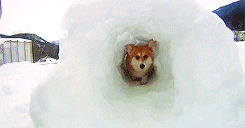
With almost half of owners saying that their dog has been threatened by another dog when out on a walk – and an equal number saying their dog has been barked at, growled at, or bitten by another dog*, there is no doubt that there is a problem when it comes to canine social interactions.
There are lots of potential reasons for this. There are over three million more dogs in the UK since the first lockdown** and so there are just more dogs out there. Most of these have missed out on the usual socialisation, puppy classes and training help that have been a usual part of dog owning in the past. And many are owned by inexperienced dog owners whose working life has never enabled them to have a dog before – and they are largely struggling through this on their own.
Knowing the reasons why however doesn’t help if you and your dog are in the middle of a park and you find yourself facing an aggressive dog. What do you do? How do you keep you and your dog (and anyone who is with you) safe?
Well first of all, this isn’t the question you should be asking! The reality is that breaking up a serious dog fight, even for experts, with everything they need to hand and someone competent and willing to help them, is a serious – and dangerous – business. The good news however is that these kind of dog fights are extremely rare. Most ‘fights’ are about noise and posturing, and look far worse than they are – and it is often the actions of the owners that can escalate them.
That doesn’t mean you should be relaxed about this. Encounters with other dogs that are frightening, stressful or worse, result in injury, can alter your own dog’s behaviour around other dogs in the future, and run the risk of your dog deciding that other dogs are ‘trouble’ and acting accordingly.
Prevention is the Number 1 goal
Your main goal at all times is to avoid these kind of encounters. I know that sounds obvious but take a look at people out walking their dogs – and see how few are actually paying attention to what their dog is doing and keeping them engaged and focused on them. So…
- Be mindful. Watch your dog and engage with them so their focus is on you and not on other dogs
- Be aware of what is going on around you. Notice if there are other dogs around, watch their behaviour (are they calm and relaxed around other dogs or are they running up to them and trying to interact (in either a friendly manner or a more threatening manner)
- Avoid dogs you don’t know. Take a different route, turn and go the other way, or just keep your dog focussed on you and take a wide berth. If you can’t keep your dog focussed on you to do this safely, put them on the lead.
- Does 3 seem mean or overly cautious? Maybe… but it isn’t up to you to decide if a dog is friendly or if an interaction is going to be positive. You don’t ‘speak dog’ and so it’s easy for you to get it wrong.
- Don’t let your off lead dog run up to other dogs they don’t know – especially if the other dog is on-lead. This is how canine arguments start (and in the case of 65% of reported aggressive encounters*, the offending dog was off the lead!)
- Never let dogs interact with each other on the lead. They can’t show natural body language and this is how canine misunderstandings happen.
The vast majority of conflict situations with other dogs can be prevented – and this should always be your goal. Your walk with your dog should be about you and them interacting together and having fun, rather than playing with strange and unknown dogs.





